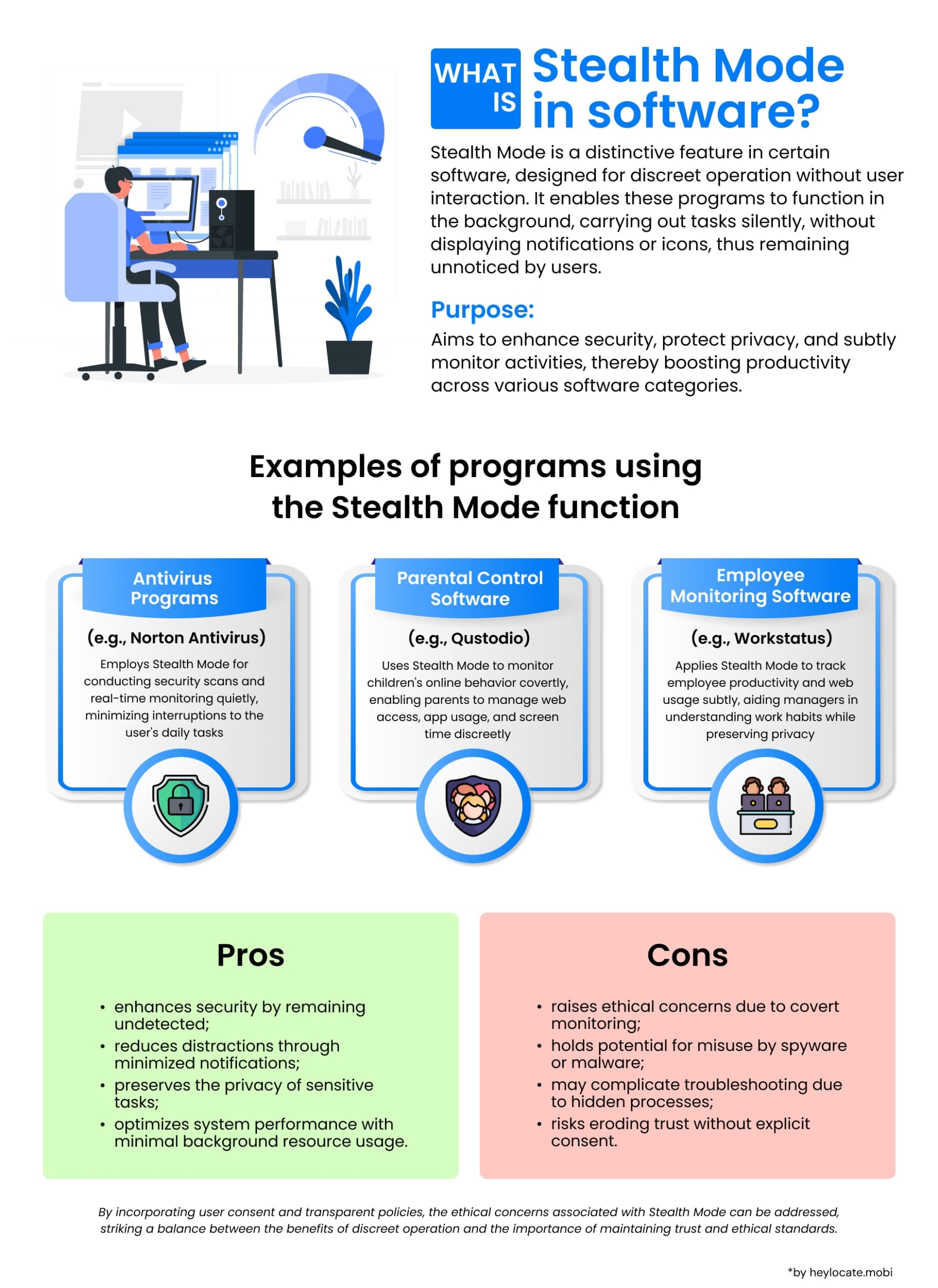Stealth Mode
What is Stealth Mode in Software?
Stealth mode is a feature found in various software, allowing it to run seamlessly and unobtrusively in the background without any interruptions. This feature enhances user experience by ensuring that the software’s operations do not interfere with the user’s tasks.

Key Features of Stealth Mode
Several key features characterize stealth mode applications:
- Invisibility: These applications execute their functions covertly, abstaining from the exhibition of icons or alerts. This covert behavior allows inconspicuous operation, enabling the software to perform its assigned duties without attracting unwarranted attention.
- Background Operation: Leveraging stealth mode, these applications execute tasks surreptitiously in the background, thereby mitigating interruptions and minimizing the requisite user interaction. This seamless background execution empowers users to concentrate on their primary objectives unhindered.
- Low Resource Usage: Stealth mode applications are meticulously engineered to optimize the utilization of device resources. This optimization ensures streamlined operation without engendering resource depletion, thus preserving the overall performance efficacy of the device.
- Optional Activation: These applications allow users to selectively turn the stealth mode feature on or off per their proclivities and exigencies. This user-centric modality fosters tailored software operation congruent with individual preferences.
Types of Stealth Mode
Stealth mode is a feature that comes in various forms, each one designed to achieve specific goals. These include:
- Security: Security software that employs stealth mode actively monitors and protects systems without notifying potential threats.
- Privacy: Applications that use stealth mode to protect sensitive data, preventing unauthorized access.
- User Experience: This mode is optimized to improve user experience by minimizing interruptions and optimizing application performance.
Applications of Stealth Mode
| Application | Description | Use of Stealth Mode |
|---|---|---|
| Antivirus Programs | Software designed to protect systems from malware and cyber threats | Operates silently in the background to protect systems without interrupting user activities |
| Privacy Applications | Software that protects user privacy and sensitive data | Conceals sensitive data and strengthens security against unauthorized access |
| System Optimization Tools | Software that improves system performance and automates maintenance tasks | Performs tasks like disk cleanup, performance monitoring, and software updates quietly in the background |
| GPS/Phone Tracking Software | Software that tracks and monitors the location of a device | Secretly runs in the background to monitor and track device location without user knowledge |
| Spyware Applications | Software that records user activities and accesses device data (note: using spyware without consent is illegal and unethical) | Operates covertly in the background to monitor user activities without their knowledge |
References
- Stealth Mode | Cyberpedia
- Stealth Mode | Adguard
- Stealth Mode – Exploring the Stealth Capabilities of TSP Applications | Fastercapital
- “Why Do You Need Stealth Mode In Employee Monitoring Software And How It Works”
- “Stealth Employee Monitoring Software-Why Do You Need It”